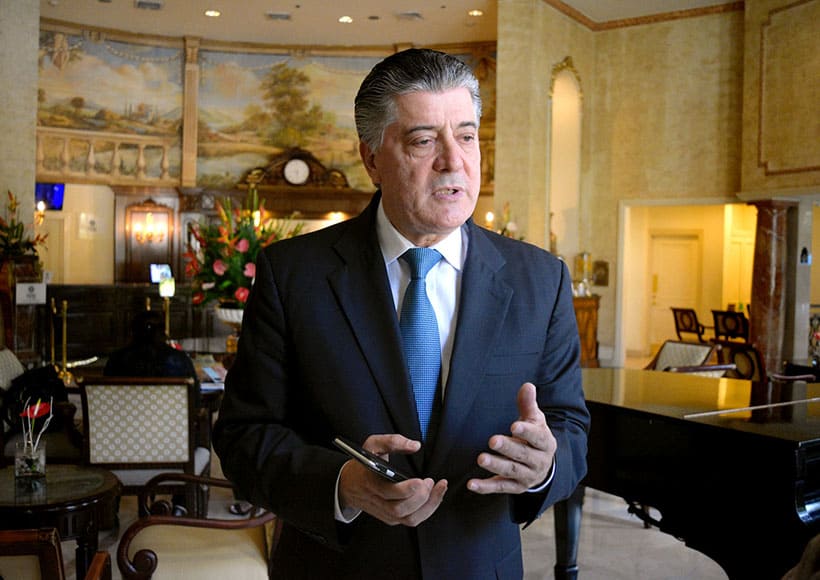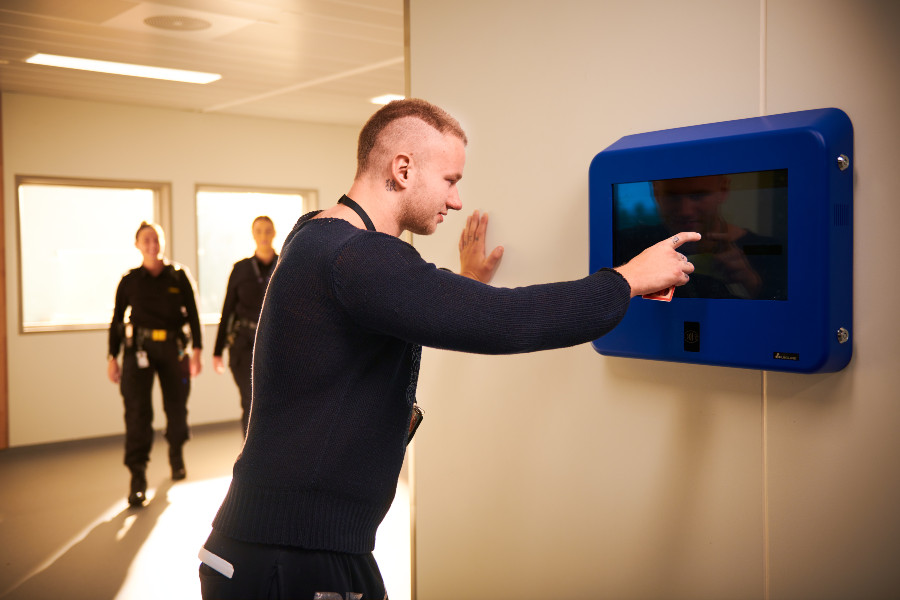// Interview: Roberto Santana
Director of the Regional Penitentiary Academy, Dominican Republic
JT: What is the Regional Prison Academy? How did this idea come up and what is the work that this organisation is doing?
RS: The Regional Penitentiary Academy (ARP) is the result of the identified needs compiled during the exchanges of penitentiary experiences between the countries of the Latin American and the Caribbean region and, to some extent, between this region and the rest of the world.
A part of the intelligence that moves around the penitentiary subject matter in this region comes from continental destinations, such as Europe – predominantly Spain, Portugal, United Kingdom, Sweden and France.
As a result of that dynamics, and of the positive results of the Dominican penitentiary reform process, a fluid exchange of experiences was established, both regionally and globally.
Since 2008, this has placed the Dominican Republic in a situation of over demand, that is, the prison model, including the office that coordinates it and the Dominican penitentiary school, had to develop a number of exchange programs, projects and activities with the countries of the region – and I think they were a little overwhelmed – both due to the penitentiary problems in the region, and to the limitations of the countries themselves to provide simultaneous support to the requesting countries.
A process of reform consumes an exceptional amount of energy, human talent and institutional availability, which means that to promote local reform and, additionally, with no extra resources, pushing that reform in other countries was not sustainable.
And, as we know, in the Latin American region, practically without exception, the penitentiary problems are structural – in many cases they are serious and in other cases we have collapsed prison systems – these circumstances were what really forced us to seek, beyond the means of the Dominican Republic, other additional means to support the region countries.
We always took the positive experience of the Dominican Republic as a reference, a country that is socially and economically similar to a significant part of the countries of the region. That is, it was not about “importing a model”.
The very first initiative, in that sense, came from the United Nations. In 2010 in Vienna, they approved the creation of the Centre of Excellence for Penitentiary Reform for the region, and it was based on the Dominican experience.
This happened after many visits of the UN during several years, while observing the process of the Dominican penitentiary reform. Like many other programs of international organisations or projects that are based on sponsors, on co-operators, when the money ends, the program also ends and, indeed, the Centre of Excellence for Penitentiary Reform received funds for two years. After that, the work went on, but, strictly from the Dominican Republic.
As a large part of the support of the Centre of Excellence itself, the European Union and the United Nations Centre of Excellence’s support for the region was related to the qualification of the human talent of prison systems, and the strengthening of the institutional capacities of each country in prisons, a group of academics and officials who had been involved in the penitentiary reform, together with some of us – university retirees and others – decided to articulate the processes of educational and institutional cooperation by creating the ARP as an institution serving all countries in the region, as well as to exchange prison knowledge at a global level.
On this basis, ARP has been triangulating agreements between countries in the South-South cooperation, and has also involved countries in Europe and North America. For example, in the case of Guatemala, in the elaboration of the penitentiary public policy, the main cooperative entity was the European Union, along with the Dominican Republic intervention.
Cooperation was triangulated in this way and that has allowed Guatemala – now with the cooperation of the United States of America, of the Dominican Republic and of the ARP – to begin its penitentiary reform, thus creating its prison reform academy and its first rehabilitation and reinsertion centre, all based on the standards of the new penitentiary model.
In the Latin American region the prison problems are structural and this forced us to look for additional means to support the countries, taking the positive experience of the Dominican Republic as a reference.
JT: How does the Regional Penitentiary Academy work, and how does it connect with other institutions?
RS: The ARP is an institution that is both educational, non-governmental, and of continental reach. For its operation and the development of its programs, it has a structure integrated by the Academic Council, the Executive General Directorate, the Academic Direction, the Research Directorate, the International Cooperation and the Academic Exchange and Administrative Management. It has also a bank of teaching staff and researchers.
In order to develop its operations in the different countries, starting with the Dominican Republic, the ARP has signed and it is still signing cooperation agreements. It has an agreement with the Attorney General Office of the Dominican Republic, that is, an agreement with the Dominican government, to support the process of prison reform in the country.
Given this, in one hand the Dominican government supports the ARP in the development of its activities, while, on the other hand, the Dominican government and the ARP, together, support other countries.
The ARP has signed cooperation agreements with educational, human rights and other entities related to its nature and objectives, such as the Technological Institute of the Americas, the Latin American Faculty of Social Sciences, and the Women for Education Foundation.
It also works with close collaboration with ILANUD and with universities in the region. In this way, for example, the cooperation agreement (Honduras – Dominican Republic – Regional Penitentiary Academy) coordinates and channels the academic and institutional strengthening of both countries in prison matters. In this case, Honduras needed a penitentiary public policy: it was supported and the country already has it; it lacked the design of the penitentiary school…
Well, it has been developed and produced. In the case of other countries, cooperation is also triangulated. Sometimes, in supporting this triangulation, certain co-operators participate: it may be the case of a country, an international organisation, or a Foundation that wants to collaborate with the penitentiary improvement of a specific country in the region.
An important element of this connection with the Dominican penitentiary model refers to the support offered by the ARP to the specialisation program implemented over the last 5 years. At the moment, the 3rd promotion of masters, university specialists in prison administration, penitentiary treatment and prison management.
By exceeding the tertiary level of education or degree, and by involving the bulk of prison officials in masters, we are entering a level of qualification that guarantees a place of leadership in the context of what is the management of the State, since that not in all departments of the State – particularly in Latin America – executives are people with a specialisation level, and even less in the penitentiary sector.
Another important aspect, in which the ARP works in coordination with the prison systems of the region, refers to the International Forum of Penitentiary Experts, which brings together every year worldwide penitentiary talent to tackle issues that the region requires.
In these last years, we have received the legacy of the vast knowledge and experience of Andrew Coyle, Vivien Stern, Eugenio Zaffaroni, Elías Carranza, Claus Roxin, Elio Gómez Grillo and Kristher Isackson, among others. This year, the 9th Forum will be held in Costa Rica.
Costa Rica is working to relaunch its penitentiary reform, which was successfully initially launched in the 1970s, thus a pioneer in the Latin American region. Today it requires a new impetus and it is ARP’s decision to institutionally support that will of Costa Rica.
In the same way, the ARP develops the program of the Latin American Penitentiary Workshop, which meets three times a year by video conference. Hundreds of officials of the penitentiary systems of the region join it, in order to get updates on priority issues such as Human Rights, Training and Penitentiary Career, Women In Prison, Social and Professional Insertion and Recidivism, Organised Crime in Prison, Corruption, and others. Using this pedagogical “moving picture” is also a way of maintaining the issue of penitentiary improvement in public attention.
Both the International Forum of Penitentiary Experts, and the Latin American Penitentiary Workshop, are held every year in the framework of collaboration between the countries of the region and sponsored by international cooperative entities.
JT: The Penitentiary School of Guatemala has recently been created and has been given the name of “Roberto Santana Penitentiary School”, in recognition of the work you have done there.
Can you briefly comment on the contribution of the Regional Penitentiary Academy to this accomplishment, and how do you see this reform process?
RS: In fact, in Guatemala we have observed the political will to push the penitentiary reform, and the truth is that it is needed. Although it is necessary in all the countries of the region, knowing Guatemala’s penitentiary reality, one can notice that it is one of the countries that most urgently needs it.
Guatemala approved its public policy of prison reform two years ago in an effort supported by the European Union. On that basis, the government has decided to undertake a profound reform, establishing a prison management model integrated by an academy that aims the training and compulsory updating of prison staff through new rehabilitation and reintegration centres for people deprived of their liberty.
There is also one national penitentiary patronage integrated by the organisations and leaders of the non-political society, with the objective of giving support, depth and sustainability to the penitentiary reform process. In all its elements, this process has been supported by the Government of the United States of America, through its Office of International Narcotics and Law Enforcement Affairs (INL) in Guatemala.
ARP has collaborated in coordinating the entire process of Dominican Republic’s support to the Guatemalan prison reform, both defining the prison model to be followed, designing the training academy for the new model, and profiling and selecting prison staff.
Also, in the training process of three months for security personnel, and of four weeks for professional and technical personnel, a total of 119 people were transferred from Guatemala to the National Penitentiary School of the Dominican Republic, where they received their penitentiary education.
//
Roberto Santana is the director of the Regional Penitentiary Academy, located in the Dominican Republic. Political scientist, professor emeritus and penitentiary expert, Roberto Santana is considered a pioneer and a leader of the penitentiary reform in Latin America and the Caribbean. Founder of the new Dominican penitentiary management model, he was also the first regional director of the United Nations Centre for Excellence in Penitentiary Reform.


